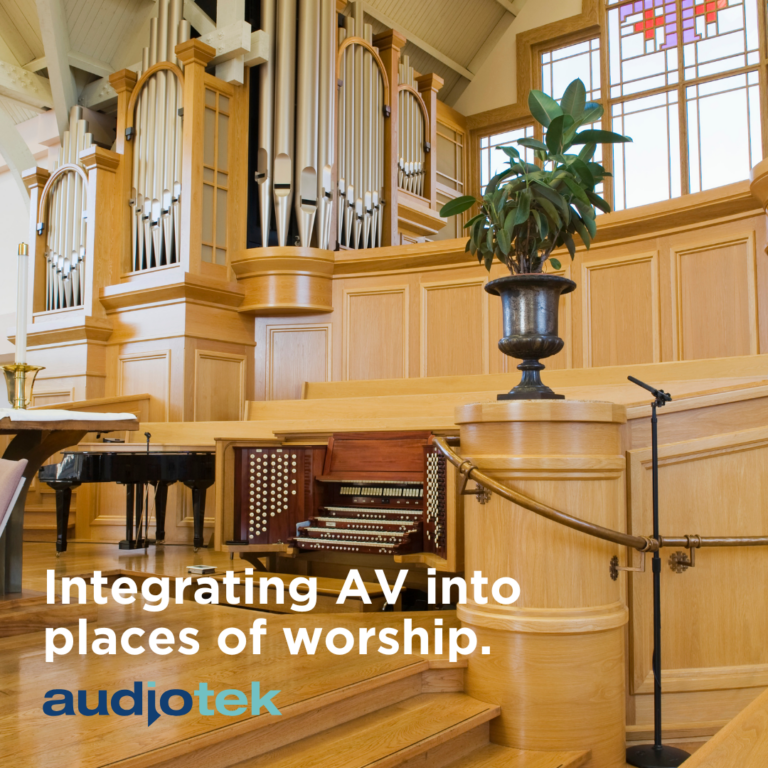Online engagement for churches: A Guide for places of worship to Adapt Online Engagement
Introduction
In an era where digital connectivity plays an increasingly central role in our daily lives, British churches—especially those housed in historic buildings—must embrace online engagement. While traditional worship remains at the heart of religious practice, embracing online engagement for historic churches allows faith communities to expand their reach, foster inclusivity, and ensure continuity of worship for those unable to attend in person.
For many historic churches, adapting to online engagement presents a unique set of challenges. Architectural constraints, acoustic considerations, and technological limitations must all be carefully managed to respect the heritage of the building while integrating modern digital solutions. This guide explores the importance of online participation, key considerations for historic churches, recommended technologies, and practical steps for successful implementation.
The Importance of Online Participation
Adopting online engagement for historic churches offers numerous benefits, ensuring that the spiritual community remains connected, regardless of physical distance or mobility limitations. Key advantages include:
Inclusivity for Homebound Worshippers
Many congregation members may be elderly, ill, or disabled, making it difficult for them to attend services in person. Live-streamed or recorded services ensure they remain part of the faith community, allowing them to participate in worship from their homes.
Reaching a Wider Audience
Online services enable churches to connect with a broader demographic, including:
- Former parishioners who have moved away but still feel a connection to the church.
- Family members of congregation members who may wish to attend services remotely.
- Individuals exploring their faith and looking for a welcoming community.
- Tourists and historians interested in the cultural and spiritual significance of historic churches.
Adapting to Changing Lifestyles
Busy schedules, work commitments, and transportation issues often prevent people from attending church regularly. Online access ensures that worship remains an integral part of their lives, allowing participation at a time that suits them best.
Overcoming Challenges with Online Worship
While online engagement presents many benefits, it also introduces challenges that historic churches must address effectively. Here are some solutions:
Maintaining a Sense of Community
Physical presence fosters a strong sense of belonging, which online participation can sometimes lack. To counter this:
- Encourage interactive elements like live Q&A sessions, prayer requests, or virtual coffee mornings after services.
- Create an online discussion forum or social media group where congregation members can share thoughts and reflections.
- Offer hybrid events that blend in-person and online participation to ensure everyone feels included.
Ensuring Reliable Technology
Technical difficulties can disrupt live streaming and impact engagement. Churches can overcome these issues by:
- Testing equipment and internet connections before services.
- Having backup solutions in place, such as pre-recording key messages.
- Training volunteers to handle technical aspects and troubleshoot issues as they arise.
Considerations for Historic Churches
Integrating online engagement in historic churches requires a balance between technological advancement and preservation of the building’s heritage. Key considerations include:
Preserving Architectural Integrity
Many historic churches are listed buildings, meaning any modifications must adhere to strict conservation guidelines. When installing audio-visual equipment, it is crucial to:
- Avoid drilling into original stone walls, stained glass, or wooden beams.
- Opt for wireless solutions or minimally invasive wiring where possible.
- Work with conservation specialists to ensure that any alterations comply with heritage regulations.
Acoustic Challenges
Historic churches were often designed to project sound naturally, which can create excessive reverberation when amplified. To ensure clear online audio:
- Use directional microphones to capture speech while minimising echo.
- Invest in digital sound processors to enhance clarity for online listeners.
- Position speakers strategically to prevent distortion and feedback.
Lighting and Visibility
Many historic churches have dim natural lighting, which can affect video quality. Solutions include:
- Installing discreet LED lighting to enhance visibility without compromising aesthetics.
- Using adjustable lighting solutions to accommodate different service times and natural light conditions.
- Ensuring that the altar and key areas are well-lit to maintain a professional video quality for online audiences.
Connectivity Issues
Thick stone walls can interfere with Wi-Fi signals, making it difficult to maintain a stable internet connection for streaming. Solutions include:
- Using strategically placed Wi-Fi access points to boost coverage.
- Running Ethernet cables discreetly to provide a reliable wired connection.
- Employing mesh Wi-Fi systems to enhance connectivity throughout the building.
Future Trends in Online Engagement for Churches
The future of digital worship continues to evolve. Some key trends to watch include:
AI-Powered Sermon Transcriptions and Translations
Artificial intelligence can provide real-time transcriptions and translations for sermons, making services more accessible to diverse audiences.
Virtual Reality (VR) Worship Experiences
Some churches are experimenting with VR to create immersive worship experiences, allowing members to feel present even when attending remotely.
Improved Interactive Features
Technology advancements will continue to enhance live-streaming capabilities, making virtual church participation more engaging with real-time chat, polls, and digital prayer groups.
Recommended Technologies
To successfully implement online engagement, historic churches should invest in high-quality, unobtrusive technology. Recommended solutions include:
Audio Equipment
- Microphones: Discreet boundary or choir microphones, such as the Shure MXA910, capture sound effectively without being visually intrusive.
- Mixers: Digital mixers like the Allen & Heath QU Series provide seamless audio control and allow for remote adjustments to sound settings.
Call to Action
Enhancing online engagement for historic churches not only broadens their reach but also ensures inclusivity for all members of the congregation. If you’re looking to integrate digital solutions while preserving the heritage of your church, Audiotek AV specialists can help. Get in touch with us today to explore bespoke solutions tailored to your needs.

Chris Kmiec
A self confessed AV nerd, Chris is a graduate of Surrey University and has over 15 years experience with commercial AV design for venues of all types in every corner of the world.

